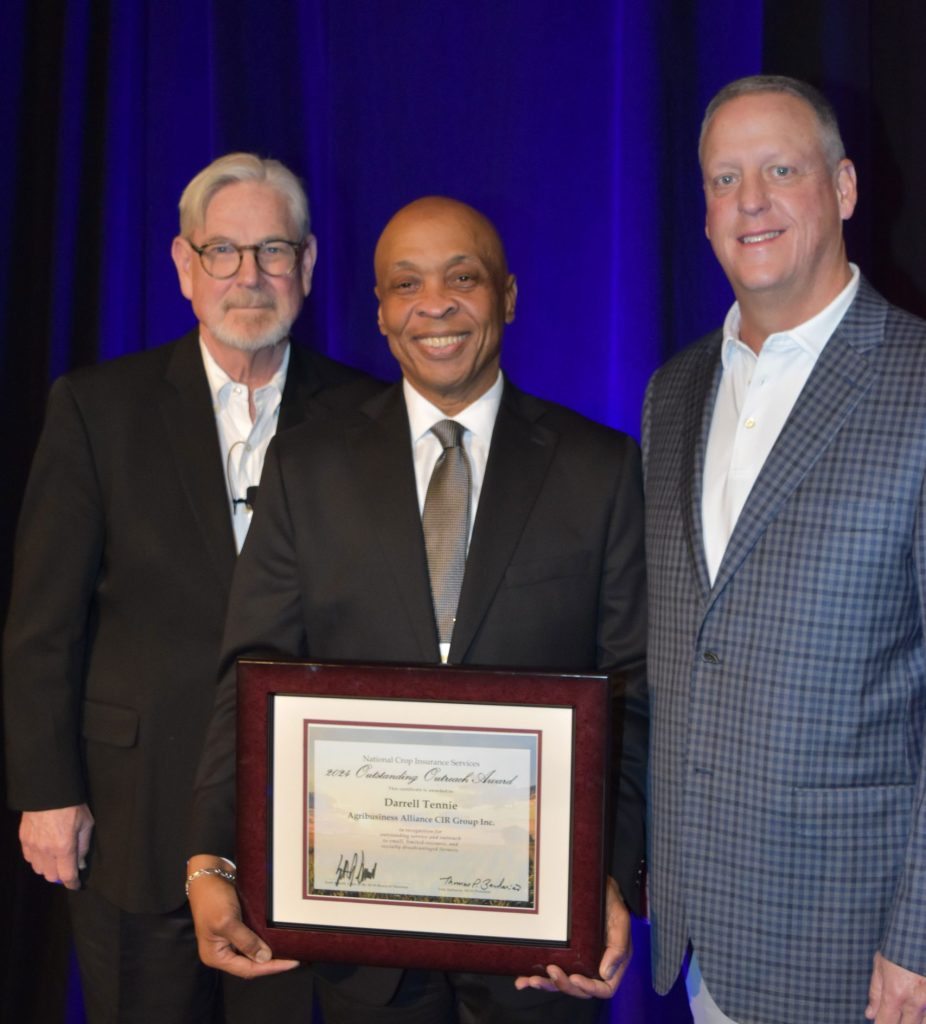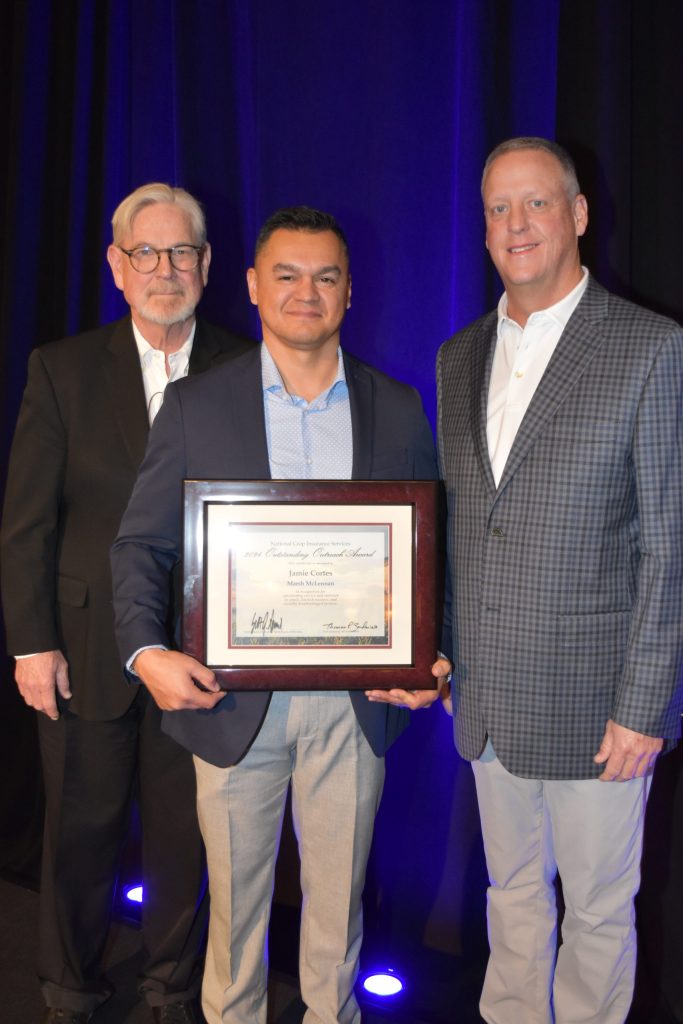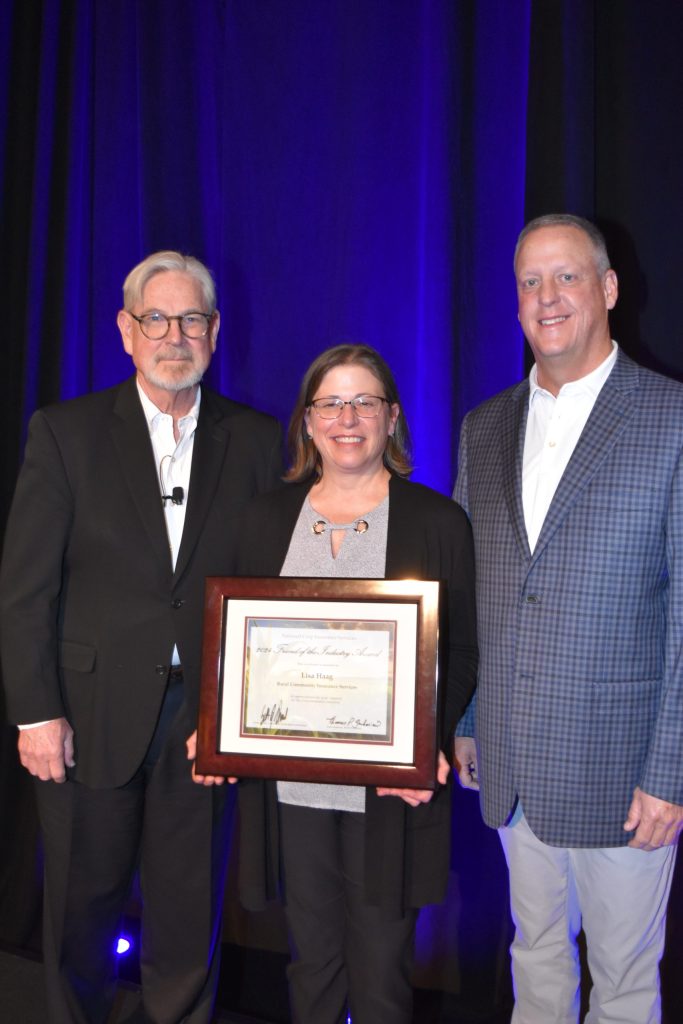Hartwell Huddleston Receives Crop Insurance Industry Outstanding Outreach Award

Hartwell Huddleston is a recipient of the 2024 Crop Insurance Industry Outstanding Outreach Award, which was presented during the 2024 Crop Insurance Industry Annual Convention in Scottsdale, Arizona. The Outstanding Outreach award recognizes an individual who provides outstanding service to all farmers, including outreach to small, limited resource, and socially disadvantaged farmers. Hartwell Huddleston is […]
Darrell Tennie Receives Crop Insurance Industry Outstanding Outreach Award

Darrell Tennie is a recipient of the 2024 Crop Insurance Industry Outstanding Outreach Award, which was presented during the 2024 Crop Insurance Industry Annual Convention in Scottsdale, Arizona. The Outstanding Outreach award recognizes an individual who provides outstanding service to all farmers, including outreach to small, limited resource, and socially disadvantaged farmers. Darrell Tennie and […]
Jaime Cortes Receives Crop Insurance Industry Outstanding Outreach Award

Jaime Cortes is a recipient of the 2024 Crop Insurance Industry Outstanding Outreach Award, which was presented during the 2024 Crop Insurance Industry Annual Convention in Scottsdale, Arizona. The Outstanding Outreach award recognizes an individual who provides outstanding service to all farmers, including outreach to small, limited resource, and socially disadvantaged farmers. Jaime Cortes, Marsh […]
Lisa Haag Receives Crop Insurance Friend of the Industry Award

Lisa Haag, Rural Community Insurance Services (RCIS) is the recipient of the 2024 Crop Insurance Friend of the Industry Award, which was presented during the 2024 Crop Insurance Industry Annual Convention in Scottsdale, Arizona. The Friend of the Industry award recognizes an individual who provides exceptional and notable contributions to the crop insurance industry. Lisa […]
Ron Rutledge Receives Crop Insurance Industry Lifetime Achievement Award

Ron Rutledge was the recipient of the 2024 Crop Insurance Industry Lifetime Achievement Award presented during the 2024 Crop Insurance Industry Annual Convention held in Scottsdale, Arizona. The Lifetime Achievement Award is designed to recognize individuals who consistently demonstrate outstanding leadership to the crop insurance industry. The lasting impact Ron Rutledge has made on the […]
President’s Budget Recognizes Crop Insurance is Key to Farm Safety Net
The President this week released his proposed Fiscal Year (FY) 2023 budget that fully funds the federal crop insurance program in recognition of the indispensable role that crop insurance plays in the farm safety net. The release of the FY 2023 Budget follows a letter sent to OMB and the Secretary of Agriculture by 55 […]
Sam Scheef Presented Crop Insurance Industry Lifetime Achievement Award
Sam Scheef was the recipient of the 2022 Crop Insurance Industry Lifetime Achievement Award presented during the 2022 Crop Insurance Industry Annual Convention held in Indian Wells, Calif., this week. The Lifetime Achievement Award is designed to recognize individuals who consistently demonstrate outstanding leadership to the crop insurance industry. During his 35-year career, Scheef was […]
Ruth Fulford Presented Crop Insurance Industry Outstanding Service Award
Ruth Fulford is the recipient of the 2022 Crop Insurance Industry Outstanding Service Award, which was presented during the 2022 Crop Insurance Industry Annual Convention this week in Indian Wells, California. The Outstanding Service award recognizes an individual who provides outstanding service to all farmers, including outreach to small, limited resource, and socially disadvantaged farmers. […]
William Pearson Presented Crop Insurance Friend of the Industry Award
William “Bill” Pearson, Huisenga Pearson, is the recipient of the 2022 Crop Insurance Friend of the Industry Award, which was presented during the 2022 Crop Insurance Industry Annual Convention last week in Indian Wells, California. The Friend of the Industry award recognizes an individual who provides exceptional and notable contributions to the crop insurance industry. […]
Teri Steppel Presented Crop Insurance Industry Leadership Award
Teri Steppel is a recipient of the 2022 Industry Award for consistently serving the industry and providing outstanding leadership to National Crop Insurance Services (NCIS) and the crop insurance industry. The award was presented during the 2022 Crop Insurance Industry Annual Convention last week in Indian Wells, California. Steppel began her career in crop insurance working at the […]

